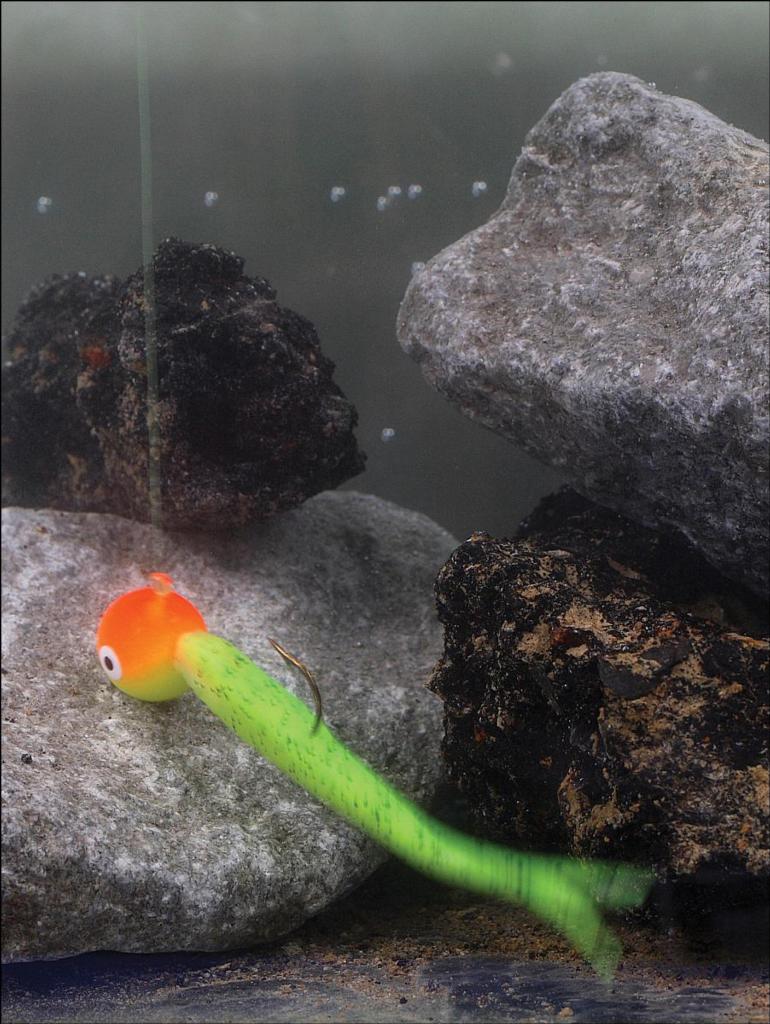Let’s get vertical

————————————–
Editor’s note: This article originally appeared in the March 2006 issue of FLW Outdoors Magazine. Learn more about FLW Outdoors Magazine and how to subscribe by clicking here.
————————————–
In spring, on freewheeling rivers with heavy current, vertical jigging for walleyes is a delicate dance. Its most ballet-like maneuver: a heel-and-toe tango on the foot pedal of a bowmount electric trolling motor.
How so? Complementing the essential two-step of leadhead jigs and no-stretch superline, orchestrated movements on an electric motor are key constituents in staying vertical for optimum control within inches of the bottom.
“You want instant reaction time,” said Walmart FLW Walleye Tour pro Tom Brunz of Madison Lake, Minn. “If the wind blows your boat, you want to be able to correct it right away.”
So it goes on a rain-swollen Mississippi River in the springtime and on the slag- and rock-strewn Detroit River, a swift-flowing, jig-gobbling thoroughfare between lakes St. Clair and Erie with current speeds to 7 mph.
On such fisheries, a crucial maneuver for vertical jiggers is “bursting” or tapping the power button on the bowmount and steering with the foot pedal in the campaign for verticality, the crucial element in keeping a jig with bait or plastic within 4 inches of bottom, where walleyes hold out of heavy current, and keeping it free from a minefield of slag, rebar and whatnot covering the riverbed.
The trick is best accomplished with a 24- to 36-volt electric trolling motor, such as a Minn Kota Maxxum, set on momentary at 70- to 80-percent power. That way, when your line gets off course, on an angle away from purely vertical, a quick burst sideways or in forward or reverse – whatever it takes – will return it to its perpendicular pitch. Otherwise, drag a jig for a microsecond in the treacherous Detroit, and it’s history. What’s more, control of your boat and, in turn the jig, lets you lift over rock pinnacles and drop it behind them – those pockets that hold mammoth walleyes that have ascended from Erie.
Another gambit is to correct for the wind. Running the boat from the front with a bowmount lets you put the streamlined bow into the wind, which allows you to drift at a natural current speed while keeping control of the boat and the jig down below.
“If you’re holding the jig too high,” Brunz says, “you’re going to miss fish. In my mind, a foot above bottom is too far.”
Additional ingredients in the campaign for verticality are highly visible, incredibly sensitive superlines to lift out of snags and drop back into pockets along with a jig that is heavy enough to afford critical feel of the bottom. Six-pound flame or bright yellow-green Berkley FireLine is a river standard for its diminished resistance, with a diameter of 2-pound monofilament. Hot pink is a new color in Berkley’s repertoire that will also fit the bill. The vivid hue helps walleye hunters see the line when bursting. You’ll also feel the line rattle when it brushes against obstructions, letting you know to lift the jig out of harm’s way before dropping it back to re-establish bottom contact.
All of this would be impossible with too light of a jig – a reversal in thinking from decades-old wisdom to use as light of a jig as possible. A 3/8-ouncer is standard on the rip-roaring Detroit, although boosting up to 5/8 ounce or 3/4 ounce is often necessary, particularly in wind, to stay in touch with bottom and in the walleyes’ faces.
“A 3/8-ounce jig is like fishing with an anchor,” Brunz says. “But you can’t be afraid to go heavier if it’s going to get you in the zone.”